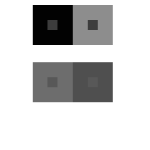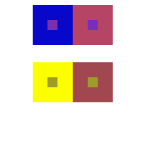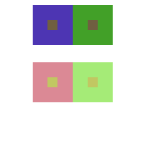New York city, one of the most sumptuous cities in this universe. Consisting of surplus people who come from different backgrounds, distinctive cultures, who all hold different values. Contrasted through physical features; black, white, tan,tall, thick, skinny, but still remaining as one. New York is an overlap personified and has been for many centuries. Despite differences, people come together through an aesthetic consensus which eventually varies from generation to generation. Ultimately, the aesthetic of older generations revolved around large scale public works in comparison to today’s generation who’s aesthetics are based more on public art. Although they are two different views they can be found in overlaps.
In the past, New York was never as upgraded and innovative as it is today. In fact, New York’s progressive era did not begin until the 20th century. But through out this period, the country’s economy hit a crisis on October 19, 1929 known as The Great Depression. The crisis caused many negative factors to outburst such as deflation, a drop in demand for credit, disruption of trade and ultimately a widespread of poverty and unemployment. In response to this crisis, A New Deal was proposed and the birth of The Public Works Administration (PWA) was created. Seeking to revive the country’s economy, the PWA provided numerous jobs dealing with the building of public infastructures. In all, the PWA helped build the economy, provide people with a better way of living, and introduce prominent structures that were much needed. Projects that provided public welfare was aesthetically pleasing for this time, especially since the country was in need of all the help possible.
Present day, aesthetics aim toward public art. Introduced by The New Deal, public art carries a whole new genre today. In the past, it was predominatly used for propaganda purposes. Current time, it is used as an outlet to engage people with reality and provide conceptual messages. An example is Olek Says’: Rule #1 never be #2. This artwork sends a message to viewers about self-exaltation. Olek connects individuals to reality by reminding that there are people out there who suffer from self abasement. To interpret the concept, critical thinking is involved. One viewer may interpret and apply this message personally or another may ponder about the treatment of others. There are numerous assumptions that can be made. Artwork of all mediums can be found throughout the city whether its murals or sculptures themselves. Benches in Brooklyn Bridge park consist of weird shapes and colors, the Brooklyn Queens expressway underpass is home to two beautiful murals. It is evident today’s generation finds incorporating artwork into the public domain visually appealing and significant in keeping humans aware.
Despite the distinctive aesthetics, they can be found overlapped in current day. A great example that showcases an overlap are the “YES!” murals located under the BQE underpass. The works from the new generation literally overlap the BQE which in fact is a prominent structure to NYC. Although both overlap, they work together to create emphasis on one another. The color from the mural helps the underpass stand out while the large scale of the underpass helps to project the mural. This is how using both artistic tastes can balance each other out while still upgrading the overall look. The overlap generates more audience from all over. In a conceptual way, the underpass is like a doorway into Dumbo. In a reading titled City Limits , Colson Whitehead writes “The city also puts a lot of effort into making your hometown look really drab and tiny”. This line showcases that regaurdless of generation, the focus is to make the city appear superior and utopian.
Throughout time New York has lived to see many phases go by. Whether it was the 20’s, or the 40’s or the 70’s, New York has survived many marks and scribbles from countless generations. That being said there are overlaps all around us but sometimes arent that noticeable to the eye because they work seamlessly into your mind. There is a balance between what is and what was and together those two things will always coexist side by side. Like Whitehead says “The city saw all that. Remembers too.” (City Limits, 9) That quote displays how the city has been through history of all kind and remembers through various stains left behind.\
works cited
- “Public Works Administration.” Wikipedia. Wikimedia Foundation, 2 Dec. 2015. Web. 07 Dec. 2015.
- Whitehead, Colson. “City Limits.” The Colossus of New York: A City in Thirteen Parts. New York: Random House, 2004. 1-12. Web.
- “Public Art.” – Wikipedia, the Free Encyclopedia. Wikimedia Foundation, Nov. 2015. Web. 09 Dec. 2015.






